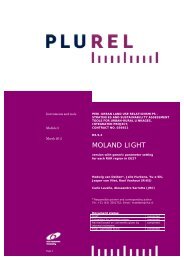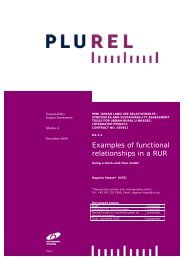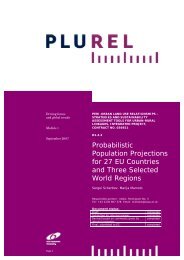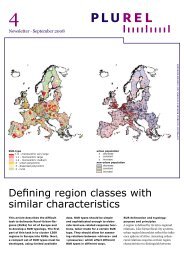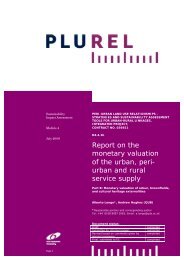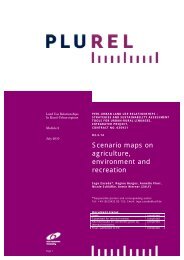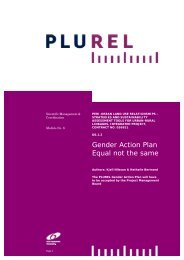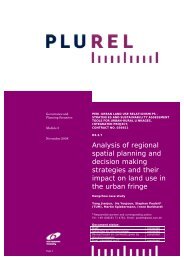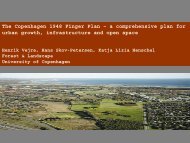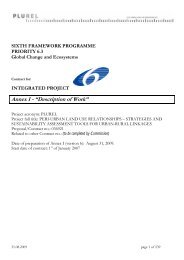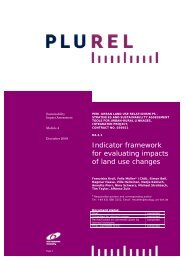Cost benefit analysis of peri-urban land use policy - Plurel
Cost benefit analysis of peri-urban land use policy - Plurel
Cost benefit analysis of peri-urban land use policy - Plurel
You also want an ePaper? Increase the reach of your titles
YUMPU automatically turns print PDFs into web optimized ePapers that Google loves.
Agricultural zone<br />
Land <strong>use</strong> within this zone could include extensive arable cropping and biomass production. A<br />
productive <strong>land</strong>scape foc<strong>use</strong>d in areas where more intensive management can occur without<br />
adversely affecting the Moss<strong>land</strong>s heart<strong>land</strong>. The economic values <strong>of</strong> agricultural areas<br />
includes provisioning values from arable cropping, as well as non-<strong>use</strong> values, such as<br />
<strong>land</strong>scape, biodiversity, etc.<br />
The scale <strong>of</strong> provisioning values <strong>of</strong> the agricultural <strong>land</strong>s is subject to types <strong>of</strong> agricultural<br />
activities – horticulture, cereal cropping, etc, as well as the varieties <strong>of</strong> cultivated crops. Current<br />
agriculture activities in the study region are predominantly cereal cropping and some potato<br />
production, limited vegetable production and very limited livestock numbers. Non agricultural<br />
enterprises include some field scale turf production and horse grazing. Several potential<br />
directions <strong>of</strong> development in the agricultural zone were proposed in the visioning report, ranging<br />
from horticulture, horsiculture, cultivation <strong>of</strong> biomass (energy crops), etc. It is beyond the scope<br />
<strong>of</strong> this study to evaluate the plausibility in economic terms for each <strong>of</strong> these agricultural activities<br />
or to forecast the composition <strong>of</strong> various agriculture activities in each <strong>of</strong> the three visions.<br />
Instead, we <strong>use</strong> available resources to gauge the potential provisional values <strong>of</strong> cultivating a predefined<br />
composition <strong>of</strong> crops, including cereal (wheat and barley), potatoes and two potential<br />
energy crop (oilseed rape and sugar beets). Hence the scale <strong>of</strong> the gross margin from growing<br />
these crops can be estimated in monetary terms.<br />
Page 39 • PLUREL report No 4.4.3 • December 2010



